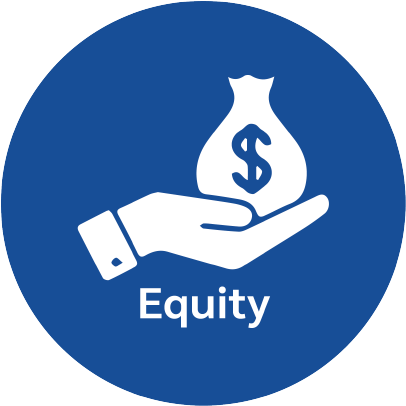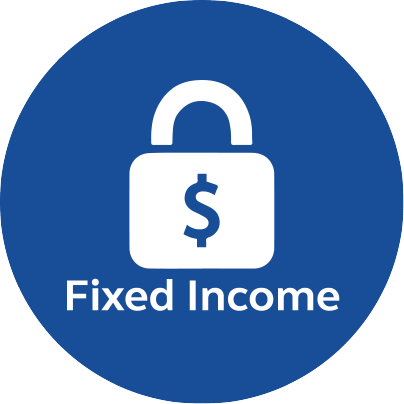5 min read I Date: 19 December 2022
Global Outlook
Equity markets in Developed markets rallied in October 2022 while Asian excluding Japan markets were mixed. The S&P500, Nikkei & Europe rose 8.0%, 6.4% & 6.3% respectively. In the Asia Pacific region, Korea, India, and Malaysia rose 6.4%, 5.8% and 4.7% respectively while Chinese H-shares listed in Hong Kong and Shanghai Composite dropped by 16.5% and 4.3%. Bond indicators remained on the downtrend impacted by the U.S. Federal Reserve’s (Fed) tightening stance. In October 2022, the indices slide 0.7% to 3.9%.1
On the monetary policy front, the Fed and European Central Bank (ECB) reiterated its resolve to bring inflation under control. The Fed’s balance sheet shrinkage started in June 2022 at a run-off rate of USD47.5 billion before rising to USD95 billion in September.2
We have a slight preference for Asian equities over bonds due to Asian equities being under-owned, cheap, and having realistic earnings estimates. Within bonds we prefer local and regional to global developed market fixed income.
We prefer neutral on equity markets for developed economies compared to their fixed income.
General outlook of the two capital markets: Fixed Income & Equity
Region: Developed economies
- Our view – Neutral
- Developed Markets economic fundamentals has shown signs of weakening. There is downside risk to growth & earnings following the strong statements to control inflation by the Fed and ECB.3
- The Fed raised interest rate to 3.75%-4.00% following its fourth 75 bps hike. The terminal rate is forecasted to be in a 4.75%-5.25% range.2

- Our view – positive.
- Developed Markets economic fundamentals has shown signs of weakening. There is downside risk to growth & earnings following the strong statements to control inflation by the Fed and ECB.2
- We are overweight on the United States (U.S.) & Japan owing to more resilient corporate earnings and underweight on the European Union (E.U.).1
Region: Regional (Asia-Pacific ex-Japan)

- Our view – neutral.
- Pockets of opportunities in local Asian currencies and Chinese credits as yields remain relatively attractive.4
- We forecast Asian bonds to provide a gross return of 5.00% to 5.75% in 2023.5

- Our view – positive.
- We added exposure to cheap valuation and China’s visible stimulus policy.
- We continue to focus on quality companies with earnings visibility, robust balance sheet, market share gainers and with pricing power.
Region: China

- Our view – neutral.
- Net supply of bond in September 2022 decreased by RMB11 billion from an increase of RMB387 billion the month before. The drop emanated from both the State-Owned Enterprises (SOEs) and private sectors.6
- The default rate in September 2022 decreased to 0.35% from 0.40% the month before.6

- Our view – positive.
- China’s new leaders post the 16 October 2022 Chinese Communist Party (CCP) congress meeting reiterated their stance to strengthen the economy with focus on science, education, and security.7
- The manufacturing PMI (Purchasing Managers' Index) for October 2022 decreased to 49.2 from 50.1 previously, while the Non-manufacturing PMI decreased to 48.7 from 50.6. The weaker data highlights the impact of the rolling lockdown.7
Region: Domestic (Malaysia)

- Our view – neutral.
- Bank Negara Malaysia (BNM) raised the Overnight Policy Rate (OPR) by 25 basis points (bps) to 2.75% in November 2022.8
- Portfolio duration is maintained at medium. The move is to take advantage of potential yield falling in anticipation of stronger market support.
- We still prefer credits over government bonds.

- Our view – neutral.
- We continue to adopt a balanced approach between value and growth while having sufficient diversification.
- We still prefer consumer discretionary and remain cautious on commodities. We are overweight on selective banks, consumers and reopening plays.
Our Strategy
- We remain overweight on U.S. expecting the high-quality growth stocks to continue to outperform if inflation eases towards year-end. If this happens, the valuation of growth stocks may be supported. Our underlying funds have focused on investing in quality companies with growth and earnings visibility, at reasonable valuation. We reduced Europe to underweight and moved Japan to slight overweight because we see corporate earnings more resilient in Japan, inflation is relatively muted and monetary policy is still accommodative compared to Europe. We have more than 50% of the Japan holdings hedged into USD to protect against the risk of further deprecation of the Japanese Yen. Moving forward, Fed’s monetary tightening path and whether economy would have a soft or hard landing, as well as the ongoing US-China conflict may continue to weigh on equity markets.
- We remain slightly positive on Asian equities. We will continue to focus on quality companies which have good earnings visibility, robust balance sheet, long term winners, market share gainers and those with pricing power to overcome cost pressures.
- For diversification and long-term growth exposure, we recommend investors to consider funds that focusses on ESG related investments for long term exposure.
- In summary, our advice to investors is as following:
- Diversification is key and we continue to advice clients to have a diversified portfolio that consists of both growth and income attributes, be it global or in Asia.
- For growth investors, Asia and China are cheap. Key themes in Asia are sustainability themes including renewables, alternative energy, and food sustainability. ASEAN remains a long-term structural play for those who believe in its resilience and continued out-performance.
- For moderate risks clients, it makes sense to position for our Asian mixed asset products or Malaysian balanced funds.
- For income seekers, we see opportunities in fixed income and money market funds given the yield is attractive today
1. Universal Funds
| Risk Scale | Fund Options | |
|
Low |
Conservative |
• Principal Islamic Money Market Fund |
| Mildly conservative |
• Principal Lifetime Bond Fund |
|
| Moderate |
• Principal Lifetime Balanced Income Fund |
|
| Mildly Aggressive |
• Principal DALI Global Equity Fund |
|
| Aggressive |
• Principal Global Titans Fund |
2. Islamic Funds
| Risk Scale | Fund Options | |
Low High |
Conservative |
• Principal Islamic Money Market Fund |
| Mildly conservative |
• Principal Islamic Lifetime Sukuk Fund |
|
| Moderate |
• Principal Islamic Lifetime Balanced Fund |
|
| Mildly Aggressive |
• Principal DALI Global Equity Fund MYR |
|
| Aggressive |
• Principal Islamic Asia Pacific Dynamic Equity Fund |
3. EPFMIS Universal Funds
| Risk Scale | Fund Options | |
Low High |
Conservative |
• Principal Islamic Money Market Fund |
| Mildly conservative |
• Principal Islamic Lifetime Enhanced Sukuk Fund |
|
| Moderate |
• Principal Islamic Lifetime Balanced Fund |
|
| Mildly Aggressive |
• Principal Asia Pacific Dynamic Income Fund |
|
| Aggressive |
• Principal Asian Equity Fund |
4. EPFMIS Islamic Funds
| Risk Scale | Fund Options | |
Low High |
Conservative |
• Principal Islamic Money Market Fund |
| Mildly conservative |
• Principal Islamic Lifetime Enhanced Sukuk Fund |
|
| Moderate |
• Principal Islamic Lifetime Balanced Fund |
|
| Mildly Aggressive |
• Principal DALI Asia Pacific Equity Growth Fund |
|
| Aggressive |
• Principal Islamic Asia Pacific Dynamic Equity Fund |
You may obtain a copy of the Prospectus/Information Memorandum/Disclosure Document and its Product Highlight Sheet (if any) for the above-mentioned funds at our offices, distributors or our website at www.principal.com.my.
Click here to download the PDF format
Disclaimer:
We have based this document on information obtained from sources we believe to be reliable, but we do not make any representation or warranty nor accept any responsibility or liability as to its accuracy, completeness or correctness. Expressions of opinion contained herein are those of Principal Asset Management Berhad only and are subject to change without notice. This document should not be construed as an offer or a solicitation of an offer to purchase or subscribe or sell Principal Asset Management Berhad’s investment products. The data presented is for information purposes only and is not a recommendation to buy or sell any securities or adopt any investment strategy. This material is not intended to be relied upon as a forecast, research, or investment advice regarding a particular investment or the markets in general, nor is it intended to predict or depict performance of any investment. We recommend that investors read and understand the contents of the funds’ prospectus and product highlights sheet available on the Principal website, which have been duly registered with the Securities Commission Malaysia (SC). Registration of these documents does not amount to nor indicate that the SC has recommended or endorsed the product or service. There are risks, fees and charges involved in investing in the funds. You should understand the risks involved, compare and consider the fees, charges and costs involved, make your own risk assessment and seek professional advice, where necessary. This article has not been reviewed by the SC.
Sources
1Bloomberg, 31 October 2022
2Federal Reserve Board, 4 May 2022
3Principal Global Investors, 30 September 2022
4Federal Reserve Board, European Central Bank, 31 October 2022
5JP Morgan, 15 November 2022
6BofA Securities, 31 October 2022
7Bloomberg, 15 October 2022
8Bank Negara Malaysia, 3 November 2022


